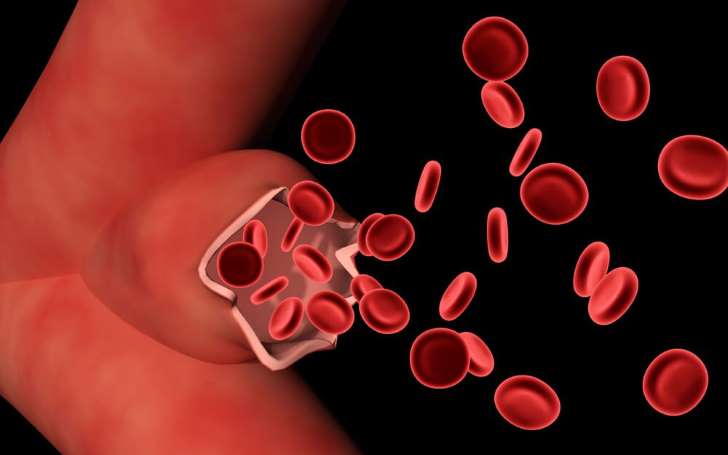While heart attacks get a lot of press, other heart issues like aortic aneurysms can be just as life-threatening—and they’re tougher to detect. Here’s what you need to know.
What is an aortic aneurysm?
The largest artery in the body is your aorta; when it weakens, bulges, and bursts—the definition of an aneurysm—the results are often deadly. According to the Centers for Disease Control and Prevention, 9,863 people died from aortic aneurysms in 2014 (the last year for which data is available). The condition contributed to another 17,215 deaths.
A silent killer
“This is a completely silent disease. It often goes unnoticed until someone looks for it with an X-ray, MRI or ultrasound,” says Neal Sawlani, MD, structural heart cardiologist at the Advocate Heart Institute at Lutheran General Hospital in Park Ridge, Illinois.
An aortic aneurysm typically occurs when the weakened aorta starts to grow and dilate. In what’s known as dissection, the artery wall can also split due to the force of blood pumping, which causes a tear in the artery.
The two types
An aortic aneurysm can occur anywhere along the aorta, but the two main types of aortic aneurysms are a thoracic aortic aneurysm, which occurs in the chest, and an abdominal aortic aneurysm, which occurs in the abdomen.
Warning signs
Unfortunately, the indications are almost non-existent. According to the Mayo Clinic, an abdominal aortic aneurysm might trigger pain in the back, abdomen, legs or groin, and a pulsing feeling near the navel. With thoracic aortic aneurysm, people report difficulty breathing or swallowing, shortness of breath, coughing, or hoarseness.
Risk factors
Abdominal aortic aneurysms occur more often than thoracic aortic aneurysms and are mostly related to hardening of the arteries—atherosclerosis—although smoking is a big risk factor. According to the CDC, those with a history of smoking are three to five times more likely to develop an abdominal aortic aneurysm. “Abdominal aortic aneurysms are usually caused by high blood pressure and atherosclerotic cardiovascular disease. Smoking is a big risk factor, but not the only one,” says Dr. Sawlani.
For thoracic aortic aneurysms, the risk seems to be genetic: People with a family history or conditions such as Marfan syndrome or Loeys-Dietz syndrome should discuss risk with their doctors. (High blood pressure or cholesterol, atherosclerosis, and smoking can make matters worse.)
Screening
Doctors can detect aortic aneurysms by X-ray, echocardiogram, MRI, or ultrasound. The U.S. Preventive Services Task Force recommends men between 65-75 years of age who have ever smoked should undergo an ultrasound screening for an abdominal aortic aneurysm, even if they have no symptoms. There is not enough evidence to determine if women need regular screening. However: “Those with a family history of aortic aneurysms should be screened even in the absence of risk factors,” says Alan Brown, MD, director of cardiology and the Lipid Clinic at the Advocate Heart Institute at Lutheran General Hospital.
Treatment
If an aortic aneurysm is detected, says Dr. Sawlani, doctors can prescribe medications to lower blood pressure or cholesterol, which can help prevent it from enlarging. If the bulge is already large or grows rapidly between screenings, surgery to graft the damaged section may help.
“Both thoracic and abdominal aortic aneurysms have the potential to rupture as they enlarge,” says Dr. Brown. “The enlargement begins to happen faster if they grow to five or five and a half centimeters. That’s when we think about repairing the aorta.”
Prevention
If you smoke, it’s well past time to quit—here are 23 foolproof ways to stop smoking for good. Uncontrolled blood pressure is another major risk factor, and cholesterol is also a concern. Dr. Sawlani recommends people work with their physician to control cholesterol and blood pressure.
Don’t forget your lifestyle: A healthy diet and regular exercise can help lower blood pressure and cholesterol. Make sure your diet includes fruit, vegetables, whole grains, lean meats and fish, and legumes. Avoid saturated fat, trans fat, and added salt and sugar. (These are the best and worst diets for heart health.)
If you experience any symptoms of an aortic aneurysm, have a family history or genetic disorder that predisposes you to this condition, or have any of the risk factors, talk to your doctor about getting screened.












